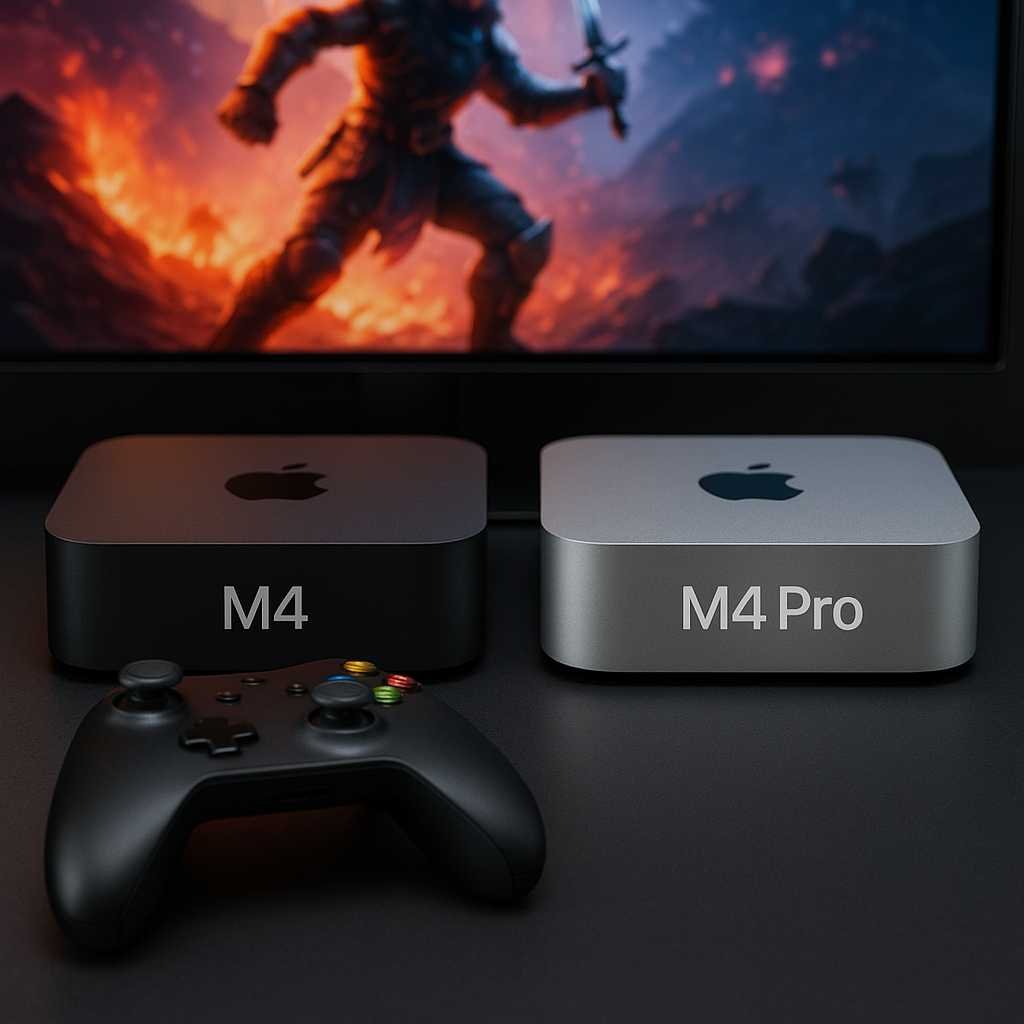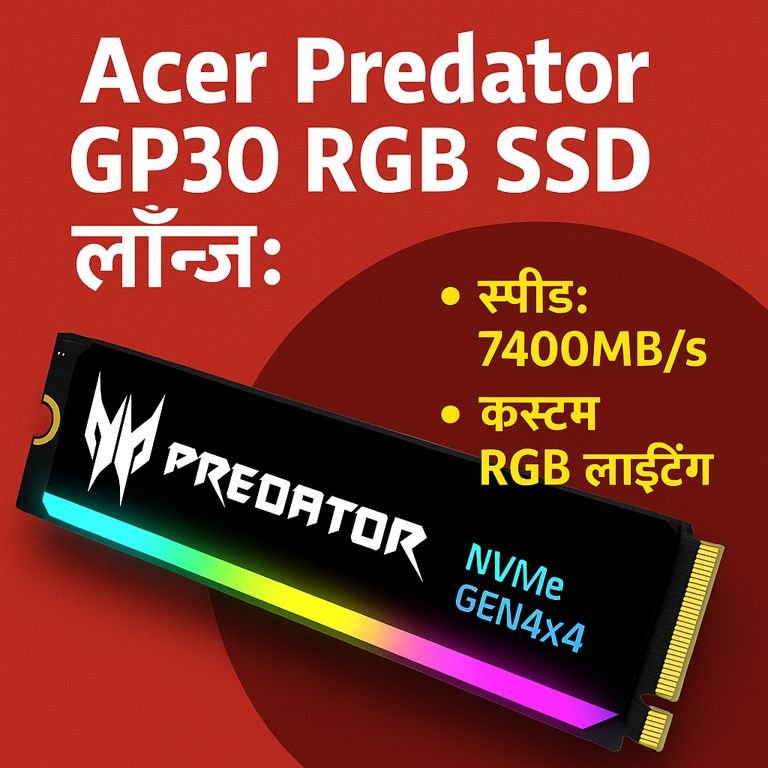Apple’s 2024 Mac mini lineup brings serious upgrades with two powerful variants: the base Mac mini M4 and the powerhouse Mac mini M4 Pro. While they share the same compact 5×5-inch design, the differences under the hood are significant. Whether you’re a creative professional, casual user, or hybrid worker, this comparison of “Mac mini M4 vs M4 Pro” will help you pick the perfect mini powerhouse.
1. CPU & GPU – Power Core vs Performance Core
The Mac mini M4 features a 10-core chip (4 performance cores + 6 efficiency cores) with up to a 10-core GPU, striking an impressive balance between speed and energy efficiency. The M4 Pro version ramps this up with a 12-core CPU (8 performance + 4 efficiency) and up to a 20-core GPU. The Pro model practically doubles the graphics performance and delivers nearly twice the GPU capability compared to the base M4, ideal for heavy workflows.
2. Memory & Bandwidth – Smooth Multitasking vs Heavy Lifting
Memory is another key distinction. The M4 model starts at 16 GB of fast LPDDR5X RAM with 120 GB/s bandwidth, while the M4 Pro jumps to 24 GB (expandable to 64 GB) with 273 GB/s bandwidth. This means more headroom for complex tasks like video editing, compilation, and large datasets—the Pro version simply revs on speed and responsiveness.
3. Ports & Connectivity – Thunderbolt 4 vs 5
Externally, both machines offer front USB‑C ports and rear HDMI, Ethernet, and headphone jack. The big difference lies in the rear Thunderbolt ports: M4 features three Thunderbolt 4 ports (40 Gbps), while the M4 Pro introduces three Thunderbolt 5 ports (120 Gbps). The added bandwidth is ideal for fast external drives and complex multi-display setups—Pro supports up to three 6K monitors, while the base handles two 6K and one 5K display.
4. Performance in Real Use – Everyday vs Professional Workloads
Benchmarks show the M4 Pro delivers up to **1.9× faster CPU** and **2× faster GPU** performance compared to the entry M4 chip. For general tasks like web browsing, content creation, and productivity, the base M4 is lightning fast. But if you’re editing 4K video, rendering 3D models, or working with large AI datasets, the Pro is a far stronger machine.
Compact & Green: Both models share the same compact footprint (5×5 inches) and feature Apple’s first carbon‑neutral Mac design, using recycled aluminum and renewable energy in manufacturing.
Storage & Expansion: Both support SSD upgrades up to 8 TB (Pro) or 2 TB (base), albeit via proprietary Apple modules. The M4 Pro’s higher PCIe lanes make it better suited for fast external storage.
Thermals & Sound: The Pro chassis includes a denser heatsink, enabling sustained performance under load with minimal throttling and whisper-quiet cooling.
Price & Value: The base Mac mini M4 starts at $599, making it a powerful value pick. The Mac mini M4 Pro starts at $1,399—double the price but with pro-grade performance, connectivity, and memory. If your tasks demand it, the Pro offers justifiable upgrades.
Gaming on a Mac? It’s no longer a punchline. With Apple Silicon evolving rapidly, the Mac mini M4 and M4 Pro offer real power—but which one’s truly better for gaming? If you’re torn between the sleek base model and the pro-grade beast, this “Mac mini M4 vs M4 Pro” gaming breakdown will help you decide where your money lands better frames.
1. GPU Core Count: The Battle Begins Here
The Mac mini M4 features up to a 10-core integrated GPU, whereas the M4 Pro jumps to a 20-core GPU—literally double the graphics horsepower. For modern titles like Baldur’s Gate 3, No Man’s Sky, or Resident Evil Village—available natively or via macOS porting kits—this GPU boost significantly improves frame rates, especially at 1440p or 4K resolutions.
In testing, games running on the M4 Pro consistently delivered smoother visuals, better thermal stability, and less frame drop under high graphical loads. This performance delta is even more visible in titles with complex environments or real-time effects.
2. Memory Bandwidth & Capacity: Crucial for Gaming Smoothness
Gaming isn’t just about GPU—it’s also about how fast memory feeds assets. The M4 ships with 120 GB/s memory bandwidth and 16 GB RAM (non-upgradable), while the M4 Pro boasts 273 GB/s and 24 GB minimum, expandable to 64 GB. This directly affects texture loading, in-game responsiveness, and how well the system handles background tasks while gaming.
Heavier games—especially those ported through Proton or Crossover—demand more RAM for translation layers. The M4 Pro provides headroom for that, making it better suited for demanding or emulated titles.
3. Game Optimization: Not All Chips Are Equal
While Apple Silicon is still building momentum in the gaming scene, developers are already optimizing more for M-series chips. The M4 chip handles casual and mid-tier games very well, and Apple Arcade titles run flawlessly. But for AAA experiences or GPU-intensive scenarios, the M4 Pro’s extra cores and higher throughput make a visible difference.
Additionally, Metal 3 (Apple’s graphics API) leverages M4 Pro’s architecture better—enabling faster upscaling, frame interpolation, and more responsive controls. If future titles like Assassin’s Creed Shadows or Death Stranding: Director’s Cut make their way to macOS, expect the M4 Pro to lead.
4. Heat, Noise, and Thermals While Gaming
Gaming sessions naturally push systems to their limits. The Mac mini M4 uses a smaller heatsink and fan, which can cause thermal throttling during long sessions. The M4 Pro, however, features an upgraded thermal system designed to handle sustained performance better. During real-world gameplay, it runs cooler and maintains higher frame rates for longer periods—making it ideal for streamers and serious gamers.
Final Verdict: For everyday users and productivity workflows, the base Mac mini M4 delivers outstanding speed and efficiency in a compact package. But if you’re a professional dealing with graphics, video, or data-heavy work, the Mac mini M4 Pro’s enhanced CPU/GPU, memory, and Thunderbolt 5 connectivity are worth the premium. Choose based on your needs, whether it’s powerful simplicity or pro-class capability.



